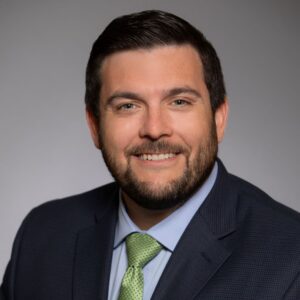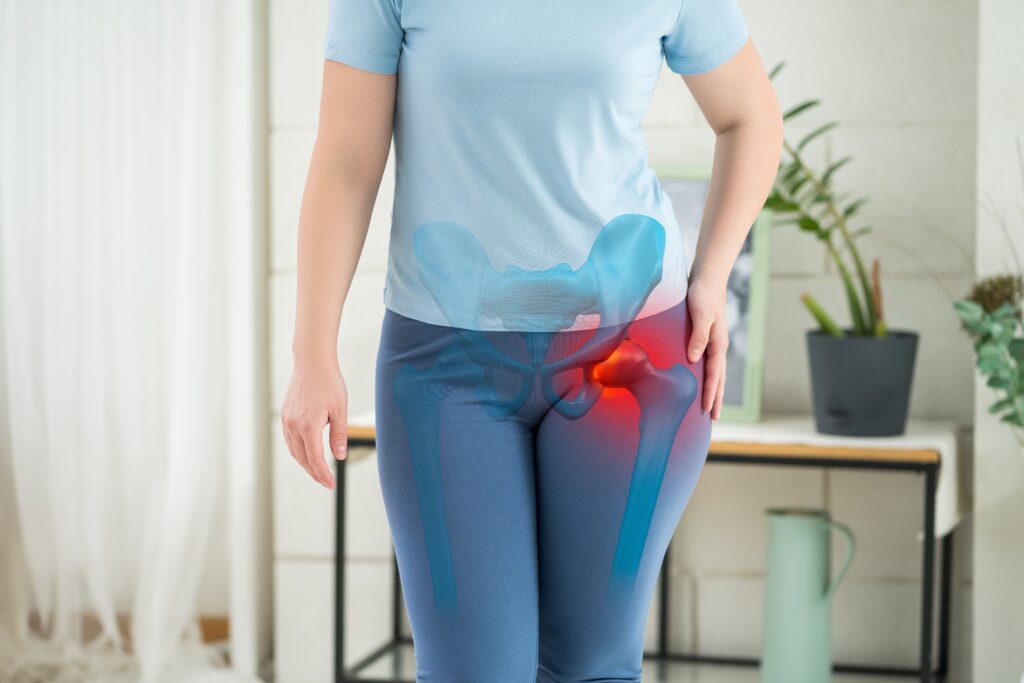
Is hip pain getting in the way of your daily life? Is it hard to take your dog for a walk, mow the lawn, go to the store, or do other everyday things? If so, you might be one of the 330,000 people in the United States who will need hip replacement surgery this year to relieve pain and improve mobility.
Total hip replacement is regarded as among the most valued developments in the history of orthopedics. The procedure relieves pain and restores mobility to people whose hips have been damaged by trauma or degenerative diseases such as hip arthritis.
OSMC Orthopedic Surgeon, Dr. Kyle Schultz notes, “Total hip replacement is one of the most successful procedures in all of Orthopedics. Patients are extremely satisfied. And, while there is some discomfort surrounding surgery, many patients notice an immediate improvement in their debilitating hip pain in their very first steps in recovery.”
What is a hip replacement?
During a hip replacement, the surgeon removes the damaged parts of the hip joint and puts in new parts, which are usually made of metal, ceramic, or very hard plastic. This new, artificial joint helps relieve pain and improve the overall function of the hip.
There are many ways that a hip replacement can be approached by the surgeon.
The three main hip replacement surgical access methods are:
- anterior – front of the hip
- lateral – side of the hip
- posterior – back of the hip
Surgeons have reasons why they use one or more approach for hip replacements. The goal, however, remains the same: replace the worn ends of the bones in the hip joint to help you feel better and get moving. All the approaches can produce excellent results.
OSMC offers fellowship trained, board-certified and board-eligible surgeons who serve patients with top care. OSMC doctors take time with patients to discuss and explain the details of what will occur before, during and after a hip surgery.
The following information is a starting point for understanding. You’ll learn more about your particular surgery during your clinic visits.
What is Anterior Hip Replacement?
The direct anterior approach uses an incision on the front of the hip. In this approach, the surgeon can work between the muscles rather than having to cut and repair muscles like the other approaches. This creates less damage and trauma to the soft issues around the hip.

- The anterior approach enables the surgeon to work between your muscles, without the need to cut muscle tissue. Therefore, there is less disruption to the muscles and tissues.
- Typically, an anterior hip replacement allows for a smooth, fast recovery to get you back to full function.
- Some patients, however, may not be a suitable candidate to have their hip replaced from the front.
What is Posterior Hip Replacement?
The posterior hip replacement approach has been the ‘standard’ way to perform a total hip replacement for many, many years. The surgeon performs the incision to access the ball-and-socket near the buttocks on the back of the hip.
- This technique is considered the tried-and-true approach to hip replacement and has a high success rate.
- Many patients are good candidates for this approach.
- It offers precision, as approaching the hip from the back provides your surgeon excellent visibility to replace the joint.
What is Lateral Hip Replacement?
The lateral approach has an incision that is very similar to the posterior approach. Like the posterior approach, it has been in use for many, many years and is successful in providing a stable hip with excellent visibility for the surgeon.
- Studies have historically found the lateral approach to promote the most stable hip replacements. Advances in other approaches have found similar stability to the lateral approach.
- Many patients are good candidates for this approach.
- It also provides a good opportunity for the doctor to obtain great visibility during surgery.
Each method has advantages and disadvantages. The surgical approach is chosen carefully by your surgeon. It’s based on several factors, including your anatomy, body type, medical history, the complexity of the procedure and surgeon’s preference. While there may be differences in the initial recovery right after surgery, most studies show similar outcomes at the end of your healing. Talking with your physician will help you determine which approach is right for you and your specific hip condition.
Whichever approach you and your surgeon agree upon is the best option, the goal remains the same: a new hip that allows you to feel and move better.
At OSMC, our experienced physicians are committed to your health. If you are experiencing hip pain or other hip issues, don’t hesitate to get in touch with us and consult with one of our experts. OSMC offers surgical and non-surgical options to help you feel better.
Contact us to set up an appointment with any of our experts. Call 574-264-0791.
This blog post is not intended to provide personal medical advice, professional diagnosis, opinion, or treatment to you or any other individual. It is information for educational purposes only. You should not use this information in place of a consultation or the advice of a healthcare provider.

